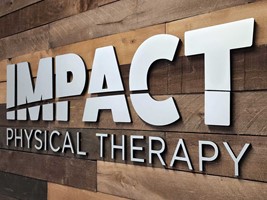
Indoor signs

9/19/2021
We are making quite a lot of labels lately for a number of different clients. Some of the uptick in demand we are seeing can be attributed to the covid-19 pandemic. The 'support local' movement has resulted in a number of us buying more from local businesses. Those local businesses are turning to local sign and graphics companies -- such as ourselves -- to support them with product labels. And we're very happy to! We can offer on-demand printing with short turnaround times and smaller production runs -- eliminates the need for our clients to hold massive amounts of labels in inventory.
So, this month I thought I would write a little bit about labels -- what they are, who uses them, and how we make them.
A label is a small piece of vinyl with adhesive on the back to attach it to an object, and information about that object on the front.
You'll find labels at any retailer on their products for sale. The labels will either promote the brand, describe the product usage, or describe features of the product. We've made quite literally thousands of labels for one of our key clients Ten Degrees Chocolate to help them sell their artisan chocolate bars and other products.
You'll find labels on shelving units at wholesalers or distribution centres. These labels are functional in nature -- designed for maximum visibility to enhance efforts to stock goods, fill orders and maintain inventory levels. The intent here is to reduce employee hours spent in long searches to locate products in storage. We helped Applied Industrial Technologies with aisle markers and shelf labels for their new warehouse in SE Calgary.
You'll find labels at manufacturers, or with trade contractors who fabricate, inspect or service equipment. Often required for regulatory purposes, these labels describe any number of elements such as:
Almost all of these equipment labels will be affixed to a piece of equipment that has low surface energy.
Surface energy is a term used to describe the surface of a given substrate. High surface energy means a strong molecular attraction, while low surface energy means weaker attractive forces.
Generally metals have high surface energy, but if it's been powder coated as a lot of equipment has, then it will have low surface energy. When it comes to labels on a low surface energy object, you need to have a high tack adhesive to help the label bond to the object. We helped Seacliff Electric with high tack adhesive labels for the combiner boxes they manufacture for a new solar farm.
You'll find labels in the construction industry anywhere that PPE and helmets are required. Most of these helmet labels have a purpose of reinforcing safety messaging to keep workers safe.
In general, plastic objects all have low surface energy, similar to powder coated equipment. Helmets would fall into this category. Labels must have a high tack adhesive In order to stick to the surface of the helmet. We've made safety labels for Telsec Property Corp team members to wear on their helmets at their Sanderson Ridge project.
We use a print and cut process for our labels. Our labels are all digitally printed using our roll-fed aqueous inkjet printer. Aqueous inkjet platforms use inks with colorants that are dispersed or dissolved in water. During printing, the vinyl absorbs the water, with the dyes or pigments remaining on the surface of the vinyl.
After the labels are printed, we take the sheet of vinyl over to our plotter. The plotter uses a small knife to precisely cut the outline of the label into the piece of vinyl. The knife moves side to side and turns, while the vinyl is moved beneath the knife. The results from the cut process is an cut to shape image of the label. The vinyl is then 'weeded' where the excess parts are removed.
I favour the kiss cut vs the die cut technique for cutting labels. A die cut label is one where both the vinyl printed label and the release liner or backer material have been cut to shape. With the kiss cut, the printed vinyl label has been cut to shape, but the backing has not. Kiss cuts are better for transportation -- the labels are less likely to get damaged or folded. I find that it's easier to peel a kiss cut label than a die cut label -- my nails just aren't long enough sometimes to separate the vinyl from the backer with a die cut label.
Here's another tip if you are creating custom labels -- go with a rounded corner because the softened corner edge will help prevent the label from lifting up or tearing.
And that is all I have to say about labels -- what they are, who uses them, and how we make them.
We enjoy a number of advantages with our current label printing process such as on-demand printing, short turnaround times, and colour management. It's a lower cost alternative to other label printing processes -- which translates to some competitive pricing for our clients.
Of course, if you need some labels, or would like to learn more about them, we're always happy to connect and chat!
Best,
Emma and Dan